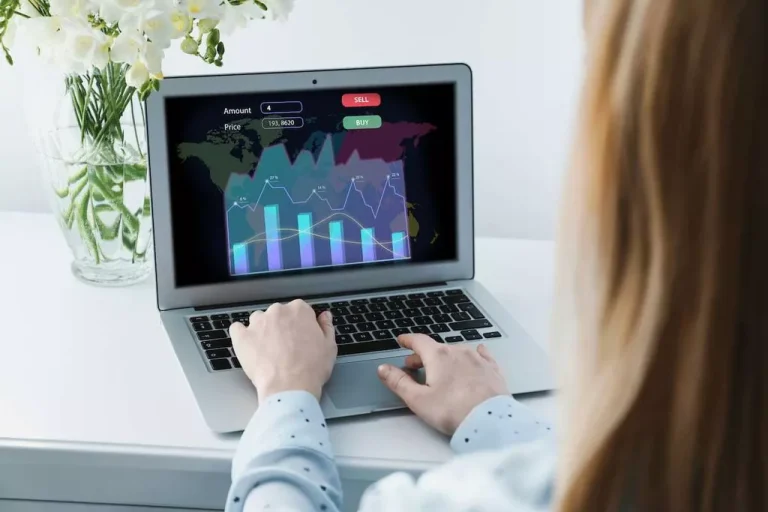Content
From Sectors and Smart Beta to Fixed Income, SPDR Exchange Traded Funds (ETFs) give you wide access to diverse investment opportunities. Liquidity risk means not being able to sell or buy Mining pool an ETF at a good price or at all. Each of these players has a distinct role, and their collective actions contribute to the liquidity and overall efficiency of the ETF market.
How Do I Find Information on an ETF’s Liquidity?
This liquidity is visible through metrics such as trading volume, market depth, and the bid-ask spread. High trading volumes and narrow bid-ask spreads frequently signify good liquidity, making it easier and more cost-effective for investors to trade. Often, investors examine average daily volume (ADV) of an ETF etf market makers as a basis for liquidity.
What Is ETF Liquidity, And Why Does It Matter?
Market makers participate in this trading by holding and offering inventory of ETF units. The market maker’s role is very important around launch, to provide the initial bit of trading liquidity before other participants join in over time. There is no involvement in the secondary market of the ETF issuer, just https://www.xcritical.com/ like trading in Google stock doesn’t involve the company. A well-functioning secondary market is an important element of good ETF liquidity. If the underlying holdings are liquid enough, the AP can create/redeem shares easily. While trading volume can indicate liquidity, it’s not the whole story.
Understanding ETF trading volume and liquidity

Bid/Ask Spread The difference between the highest price a buyer is willing to pay for an asset and the lowest price the seller will accept to sell. Bid-ask spreads are a key measure of the liquidity of an asset or security. Each of these capital markets players contributes to ETFs trading more efficiently throughout the day, which benefits both buyers and sellers. There are also economic benefits for the capital markets participants. A primary market that supports the ETF liquidity and allows them to trade close to the Net Asset Value (NAV) throughout the day. Knowing more about liquidity in the primary and secondary markets may help you evaluate ETFs more strategically.
- The AP can offload a large basket of shares (i.e., redeem) or acquire a large basket of shares (i.e., create) directly from the ETF issuer.
- The concept of liquidity in ETFs extends beyond the traditional understanding applied to individual stocks.
- The fund is traded on a stock exchange and therefore can be conveniently bought or sold like individual stocks.
- Whereas these securities have a fixed supply of shares in circulation, ETFs are open-ended investment vehicles with the ability to issue or withdraw shares on the secondary market according to investor supply and demand.
- Liquidity describes how easily an investment can be converted into cash.
- Authorized participants (APs) can create or redeem ETFs and exchange the “baskets” of the ETF’s underlying securities for new ETF shares from the fund issuer.
The third layer of liquidity is the creation and redemption mechanism of ETFs, a feature designed to handle the large trade / low on-screen volume problem. Finally, the number of market makers and their ETF inventory also helps support liquidity. Issuers often cultivate relationships with market makers in order to create a more fluid market in their ETFs. This happens during market cycles – liquidity is often poor in bear markets or periods of financial stress. ETFs provide access to a wide range of investment options, covering a broad range of asset classes, sectors and geographies.
But for investors with taxable (non-qualified) accounts, owning cost- and tax-efficient iShares ETFs can help improve your long-term investment returns, allowing you to keep more of what you earn. A big reason for the tax efficiency of ETFs is the vast majority are index funds, which typically trade less frequently than actively managed funds. Low turnover means fewer sales of stocks that have appreciated, generating fewer taxable capital gains. Index ETFs generally seek to track indexes that are comprised of many individual securities, helping to spread the risk and reduce the impact of price swings in any one security. Although this does not eliminate risk entirely, the diversified structure of ETFs has the potential to improve the risk-adjusted return of your portfolio. When it comes to owning ETFs, a key element to consider is the Total Expense Ratio (TER), which represents the total cost of holding an ETF for one year.
Creation is the process by which Authorized Participants (APs) introduce additional shares to the secondary market. During this process, APs deliver the underlying securities to the fund sponsor in return for ETF shares. ETF liquidity is an important consideration for investors because it impacts the ability to buy or sell an ETF at a reasonable price. In highly liquid ETFs, sellers can easily sell their shares in an ETF at a price close to the net asset value (NAV) of the ETF.
The difference between the bid (buying) and ask (selling) prices for an ETF. A narrower spread indicates better liquidity, making it cheaper and easier to execute trades. When ETF liquidity is high, the prices more accurately reflect the underlying assets, and any mispricings get corrected quickly.
He is a CFA charterholder as well as holding FINRA Series 7, 55 & 63 licenses. He currently researches and teaches economic sociology and the social studies of finance at the Hebrew University in Jerusalem. Choosing an ETF first starts with understanding one’s investment goals, and whether that ETF will help you meet those goals. Whether you’re looking to build wealth, or to just save up for a vacation, iShares ETFs can make investing as easy as choosing a playlist of songs. And they’re transparent — Allowing you to see what you own and keep your asset allocation in check. They’re generally tax efficient — helping you keep more of what you earn.
The AP creates/redeems ETF shares by exchanging securities in the basket for shares of ETFs, or vice versa. At the end of each trading day, the ETF issuer publishes the Portfolio Component List, which includes the security names and corresponding quantities that comprise the ETF basket for the next trading day. This means an ETF is closed down and all funds returned to investors.
It should not be considered a solicitation to buy or an offer to sell a security. It does not take into account any investor’s particular investment objectives, strategies, tax status or investment horizon. All material has been obtained from sources believed to be reliable. There is no representation or warranty as to the accuracy of the information and State Street shall have no liability for decisions based on such information. Liquidity is one of the most important features attracting a diverse group of investors to exchange traded funds (ETFs). To understand where ETF liquidity comes from, explore the mechanics of ETF trading and the roles played by key members of the liquidity ecosystem.
This and other information can be found in the Funds’ prospectuses or, if available, the summary prospectuses, which may be obtained by visiting the iShares Fund and BlackRock Fund prospectus pages. Learn why diversification is so important to investing and how it helps investors reduce risk, enhance returns, and navigate fast-changing markets. Because ETFs are traded on stock exchanges, they are easily bought or sold. The technology of ETFs has empowered investors of all types to easily and conveniently access both broad market exposures, as well as more-targeted investments in previously hard-to-reach markets. The liquidity of ETFs has long been misunderstood and, sometimes, misrepresented. It is the underlying assets that determine true liquidity, not the structure of a fund.
By clicking below you acknowledge that you are navigating away from temaetfs.com and will be connected to temafunds. Please take note of Tema’s privacy policy, terms of use, and disclosures that may vary between sites. Many ETFs are open-ended funds, meaning they can continuously adapt the number of outstanding shares. Unlike closed-end funds, which have a fixed number of shares, open-ended ETFs can adjust their share count based on demand and supply dynamics.

In return, the ETF sponsor delivers ETF units of equal value to the market maker, which the market maker then sells publicly on the exchange to meet investor demand. The reverse process is followed in case of redemptions, when the supply of units is larger than demand. ETF liquidity has two components – the volume of units traded on an exchange and the liquidity of the individual securities in the ETF’s portfolio. ETFs are open-ended, meaning units can be created or redeemed based on investor demand.
Therefore, the ETF will have a liquidity profile matching the FTSE 100 companies’ liquidity. For example, a FTSE 100 ETF will hold all of the composite companies matching the percentage weights in the index. If you want to invest £10m in that ETF, the ETF investment manager needs to be able to buy £10m worth of shares in the companies that make up the index. ETFs come in many shapes and sizes, tracking a wide range of asset classes, therefore it is impossible to generalise.
